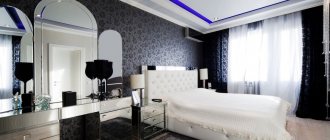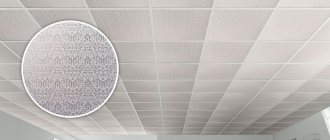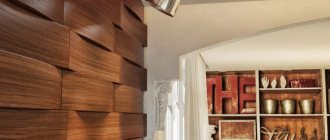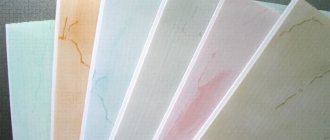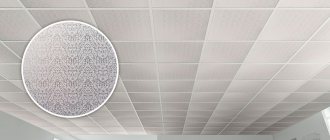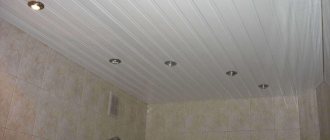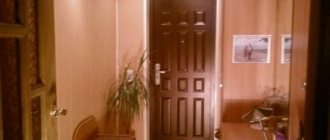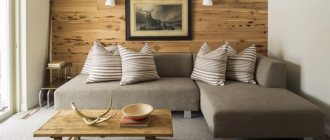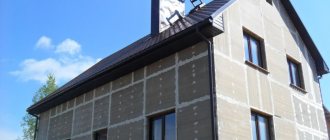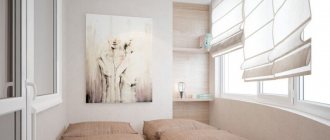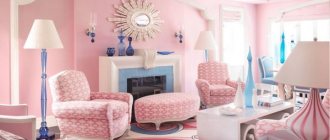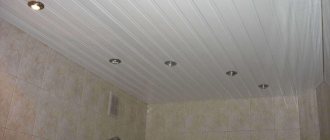Today, wood panels are considered one of the most popular materials for wall decoration. Even though other options are emerging, wood panels are still trending.
Possible options for combining wood and stone in the interior of an apartment
Wood in the interior can be either an independent element or in tandem with stone. The combination with mineral is ideal for zoning a living space. At the same time, the variety of shades allows you to implement many ideas in the interior.
Stone and wood in the interior as two natural materials complement each other.
Many styles involve combining wooden partitions in an apartment with stone walls. Or the walls can be made in wooden style, and a separate area, for example, a fireplace, in stone.
For a studio apartment, contrast in the form of a kitchen set made of wood and stone walls or a stone sink is perfect. Many variations with wood floors and stone walls.
Warm and soft wood with strong stone are indispensable for creating eco, Provence and country style.
To create an unusual and modern interior, the best solution would be to design an apartment in a wooden style, which will give the room not only environmental cleanliness and freshness, but also add warmth and comfort.
Fragments of decorative stone and beams combine perfectly and are suitable for any interior.
How to attach MDF panels to the wall, how to attach correctly
Before starting a renovation, many people ask the question: how to attach MDF panels to the wall? Today, there are only two ways to install this finishing material:
The panels are attached to the ceiling in the same way. Here's about finishing the ceiling. Let's look at the positive aspects of both methods:
To understand all the subtleties and nuances of both methods, let's consider each of them in more detail.
Knowing how to attach MDF to a wall will help you choose the option that’s right for you and your space.
For more information about installing MDF panels to the wall, watch the video:
Options for interior decorative wall decoration
Popular types of wall decoration.
Wallpaper
A fairly common finishing material, which is distinguished by a wide variety of types, textures, photo prints, color schemes and a wide pricing policy.
Dye
High-quality, resistant, durable paints with high decorative qualities provide an excellent opportunity to create a truly amazing interior in any style direction.
Laminate
It has countless shades and textures, allowing you to choose the perfect design for any room. Laminate brings additional comfort, warmth and at the same time elegance and style to the environment.
Brick
Using brick you can create a contrasting accent that attracts attention. Rough texture, due to its naturalness, always looks very advantageous
Panels
They have an unlimited number of options and are particularly practical and highly aesthetic, which makes them a very popular finishing material.
Decorative plaster
It can be a self-sufficient type of finishing or can be combined equally well with other materials. Decorative plaster can significantly transform a room and make it look impressive and expensive.
Tile
Among other types of finishing, tiles occupy a leading position, since with their help you can easily create elegant accents in the room and create both a calm and bright design.
Cork
Natural, unique and having no artificial analogues, cork undoubtedly becomes the most expressive detail of the entire interior.
Wood finish
Lining, aged board, block house or panels made from valuable wood species are an excellent option, providing the opportunity to experiment with design.
Decorative rock
Decorating with decorative stone is the most optimal option for decorating walls, which always looks very impressive and adds a certain naturalness to the atmosphere.
Under concrete
A publicly available, wear-resistant and environmentally friendly material with a large number of positive characteristics. The concrete surface, complemented with bright and stylish accessories, allows you to get a very interesting and inspiring result.
Advantages and properties of wood cladding
Cladding the facade with wood is elegant, respectable and stylish. If you decide to choose wood, you can't go wrong. Such cladding will make the appearance of the house designer. In addition, cladding the facade of the house with wood will help hide uneven corners, metal frames and simply improve the appearance of the building from the outside. Let's look at the main aspects of using wood as a material for facade cladding. What are its main properties and advantages? First of all, you should decide what types of facade materials exist and what are their main differences.
Wooden panels are attached to the sheathing with a ventilation gap to prevent condensation.
Wood siding
These are planed molded profiles of various sections and lengths, made from various types of wood. There are two types of such profiles:
- A profile, spliced along the length, from fragments of different boards strung on a jagged tenon.
- Massive profile made from a single board.
The very concept of wooden siding came from distant America. The Americans used this term to describe the cladding of a house with overlapping boards. In this case, the sheathing board is positioned horizontally, with the lower edges of the upper boards covering the upper edges of the lower boards. Thus, the house is well protected from winds and rain. The advantages of siding are that it is an environmentally friendly material that allows the building to “breathe.” At the same time, it has lightweight construction and durability. But the main thing is that siding installation can be done easily and quickly yourself. Also, with the help of siding, it is possible to decorate the facade with wood. To do this, use metal, vinyl or fiber cement siding that imitates natural material.
Important!
Please note that each of the listed options differs in weight, which is very important for calculating the foundation.
Anyone can build such a mansion: purchase foam blocks and line them with wooden panels
Facade panels
This invention came into use much later than siding. So far it is actively used only in North America and Europe. Wood facade panels are layers of wood glued together in thickness, which form regular (geometrically) sheets of certain sizes. There are many options, for example:
- Imitation of boarding a house using moisture-resistant plywood with milled longitudinal grooves.
- Panels for ventilated facades, three-layer sheets glued together from wider lamellas.
Finishing the façade of a house with wood using panels allows you to create a modern look and ensure good ventilation of the structure.
Reminder!
If you have never encountered such a design and have no idea what wooden facades look like, study their appearance in the photos provided before you finally make your choice.
Finishing facades with wooden shingles - looks very good
Wooden siding imitating timber - you can only find the differences at close range
Wooden panels on the sibit facade provide protection of the material from humidity and other atmospheric influences
Beautiful examples
Wood in the interior is always luxury, discreet chic and comfort. Depending on the style and size of the room, you can select panels that will optimally fit into the overall style idea. Bedroom or living room, office or nursery - natural wood is appropriate everywhere.
Depending on the design idea, slatted panels, square or rectangular slabs, and 3D models can be used to decorate the bedroom. This is a room in which you want to relax, calm down, and rest, so bright, expressive colors, complex designs, and cold surfaces are not suitable. Wood, with its eye-pleasing shades, natural warmth and coziness, will be the optimal solution for decorating this room.
If you decorate the wall at the head of the bed with panels, you can emphasize the sleeping area in the room. Such a wall does not require any additional decor; it is beautiful and aesthetic in itself.
Many design trends involve the use of wood in interior decoration. For example, in the English style, wood is an important decorative element. The panels covering the lower part of the walls, the ceiling with beams, the floor - planks or parquet - all these are integral elements of the English style, just like the fireplace and the chair in front of it.
Decorating an office requires a completely different approach. This room is intended for work, therefore its design should set it in a working mood, create a comfortable, but not relaxing atmosphere. And in this case, the tree will also come in handy.
This material was originally used in the design of cabinets. The aristocracy, in whose houses one could find private offices, was not afraid of the high cost of natural wood. Now expensive natural materials can be replaced with more affordable options - chipboard, fiberboard, MDF, OSB.
If previously the office was usually decorated in a classic style, today you can find a wide variety of style solutions in the decoration of this room. Thanks to modern technologies, wooden slabs made of composite materials are produced in a wide variety - both in shape and in decor. Imitation of the structure of natural wood, brickwork, stone, brightly colored panels - for every taste.
The lower part of the walls can be covered with panels. They can be combined with wallpaper. Then you will get an interior in the spirit of old England.
Wooden ceilings are also appropriate in retro style. Whatever era the interior reflects, wood will fit perfectly into the overall concept. Treated with stain or painted white, it will become a good background for furniture and decorative elements.
Wooden ceilings with beams will harmoniously fit into an interior designed in country or Provence style. English style also implies this ceiling design.
If you cover the wooden panels with white paint and go over them with sandpaper so that the paint wears off in places, they will become a wonderful addition to a shabby chic interior. Panels of dark colors, black will harmoniously fit into such an extraordinary style as a loft. They will be able to add a touch of homely warmth, comfort, and natural freshness to this industrial style.
Turning to classic interiors of any era, you can see that wood has long been an integral element of interior design. It is impossible to imagine aristocratic interiors without parquet floors (most often made of oak), carved furniture made from precious wood, and all kinds of architectural and decorative elements. Even in palaces, the walls were decorated with carved wooden panels.
Now the choice of finishing materials is quite large. You can choose a finish to suit every taste - from stone to plastic. But the tree still does not give up its position. Its natural beauty, environmental friendliness, durability and special charm have no analogues. Therefore, the number of fans of this finish is not decreasing.
An overview of 3D wooden panels awaits you in the next video.
Wood panels
The most common types of wood for manufacturing are:
- oak;
- maple;
- coniferous trees;
- cedar;
- cherry
You can also use: ash, birch, alder and beech.
Wooden panels will look status and expensive. An excellent option would be to use them to decorate an office, living room or bedroom.
Important! If you want to use wood flooring in places where there is a high level of moisture (namely the kitchen or bathroom), then be sure to use moisture-resistant impregnations. Be sure to use them at locking and end joints to avoid delamination of materials.
Wall design options
The construction market is replete with various offers, forcing the modern consumer to rack his brains over the choice of finishing material.
Some opt for the simplest and most affordable methods, which are suitable both for finishing an old country house and new houses, which will be discussed below.
Painting
To implement this finishing option, you can use various types of paints (see photo), among which the most common are water-based and acrylic materials.
The advantages of this finishing method:
- painting is a very simple procedure that does not require special skills and tools;
- the painted surface can be easily repainted in a different color if necessary;
- an endless selection of colors and shades;
- ease of cleaning and disinfection.
Now about the disadvantages:
- Before painting, the walls require careful preparation, since if there is a rough surface, the paint will lie in an uneven layer, which will lead to the formation of peeling over time;
- the painted surface needs systematic wet cleaning;
Drywall
Installing drywall will not only allow you to perfectly align the walls in the room, but also lay thermal insulation material between the sheets and the main wall, if necessary.
Advantages of using drywall:
- quick and easy installation;
- the ability to construct structures of any complexity;
- drywall makes it easy to disguise wiring and various communications;
- Possibility of finishing with various finishing coatings.
Flaws:
- the usable area of the room decreases;
- low resistance to mechanical stress;
- the need for additional puttying of seams and joints after installation, as well as puttying of the material over the entire area;
- Drywall is susceptible to high humidity, which negatively affects the service life of the material.
Textile
This finishing method was often used in the old days, but now it has received a rebirth. Both natural textiles and artificial materials are used to cover walls.
The fabric is attached in various ways: pasted like regular wallpaper, stretched onto pre-constructed wooden frames, which are then installed on the wall, and fixed to the wooden wall with a stapler.
Advantages of the method:
- there is no need to level the walls (except for those cases when fabric is glued instead of wallpaper);
- resistance to various mechanical damage - textiles simply stretch under load without being subject to ruptures or cracks;
- the room acquires a special chic thanks to the texture of the material;
- fabrics for wall decoration are made in a wide range, so there are many options to choose from, as well as the possibility of combining the material with curtains and bed linen.
Flaws:
- the fabric absorbs a large amount of dust, so the material must be vacuumed regularly;
- textiles quickly lose their appearance, get dirty and rubbed easily.
Wallpaper
A traditional option that provides the modern consumer with a wider range of options than in the old days.
Today you can purchase not only paper wallpaper, but also vinyl, duplex, non-woven, textile and other types of materials.
Advantages of wallpapering:
- walls require less thorough preparation, unlike painting, which requires repairing even the smallest cracks and irregularities;
- large selection of different types of material;
- the ability to independently carry out finishing work with minimal skills.
Flaws:
- the need to replace wallpaper (except liquid wallpaper) after 5-7 years, as they quickly lose their appearance;
- susceptibility to mechanical damage;
- difficulties in removing dirt, even when it comes to washable wallpaper.
Wall panels
Wall panels are products intended for decorative finishing of walls. They can be made from various materials (chipboard, fibreboard, PVC, wood) and in different shapes - in the form of slabs, sheets and slats.
They are mounted like drywall on a frame, which in this case can be either steel or wood.
Advantages of panels:
- relatively simple installation;
- the possibility of equipping the wall with sound insulation, which is laid behind the panels;
- there is no need to level the walls before installation;
- the ability to dismantle the panels for use in another location.
The disadvantage of this finishing method is that it reduces the size of the room, since the lathing on which the panels are installed takes up a lot of space.
Impregnation
It is also necessary to treat façade panels for exterior finishing with various impregnations. They make the material more durable and protect it from various influences. There are different types of impregnations. They are divided according to the type of base:
- saline;
- solvent-based;
- oil;
- water based;
- acrylic;
- waxy.
They are also divided by purpose:
- fire protection;
- moisture-proof;
- from rotting;
- antiseptic;
- repels pests and rodents.
There are also various methods of applying impregnations: in a vacuum chamber, with a brush, with a roller, with a spray gun, or by soaking.
Purpose of impregnation
Impregnation for wood
Salt. In this case, the product must be applied in a vacuum chamber at the stage of lamella production. It provides a high level of fire protection. However, with any other method of application, its effectiveness is reduced to almost 0. Salt impregnation takes a long time to dry. If you start installation before it is completely absorbed, there is a high probability that the metal fasteners will quickly become unusable: salt accelerates corrosion processes.
Oil impregnation prevents the wood from drying out and cracking. It also increases its resistance to water. It dries quickly and penetrates deeply. You can apply it in any convenient way.
Water impregnations can have different purposes: fire protection, increasing biological resistance, antiseptic, etc. Sometimes they can combine several functions. Their only drawback is possible toxicity. How dangerous a substance is to humans can be found on the label.
Wax and acrylic perform the same functions as the above-mentioned products. But at the same time they are less toxic and safe for humans. But they also cost an order of magnitude more.
Options for wall decoration in a wooden house
There are many options for finishing a wooden house. It all depends on the operating conditions, finances, your desires and the style of the room.
Clean log house finished with paints and varnishes
If you strive for naturalness and environmental friendliness, and live in a region with a consistently dry and stable climate, then a log house made of natural wood is suitable for you.
In such a house you will always be haunted by the aroma of natural wood.
This type of finishing is increasingly gaining popularity among our stars. This original Russian style makes the room lively and the microclimate healthy. This type of finishing attracts with its beauty, durability, environmental friendliness, simple design and simplicity. Such projects can be recreated with historical accuracy in the way houses were built many centuries ago.
Lining as a wood finish for walls when it is impossible to sand the timber
Lining is a traditional material for home decoration. Its advantages are obvious - it is easy to install and looks quite aesthetically pleasing. The lamellas, with the help of special fasteners, are connected tightly.
Cladding with clapboard creates a perfectly smooth and beautiful surface
Other advantages of this material include:
- speed of installation;
- environmental friendliness;
- many shades of coating;
- made from different types of wood.
Among the disadvantages are:
- high price;
- the need to construct sheathing;
- the need for careful care.
Preparatory steps include not only the installation of the sheathing, but also the processing and inspection of the lamellas themselves
It is important to sand and dry them first.
The final stage is coating the lining with varnish, sanding and another varnishing.
Block house is a more modern type of lining. Typically, such blocks are made from high quality wood, which does not shrink, is not inferior in strength and strength, and in many ways even surpasses classical materials.
The block house allows you to maintain the unique microclimate of the room
In addition, this finishing material does not lose its original quality due to wood processing. The texture of the material is no different from natural wood.
The main advantages of a block house:
- mechanical strength;
- environmental friendliness;
- aesthetic appearance;
- light weight;
- ease of assembly.
For interior decoration, slats with a thickness of no more than 25 mm are better suited. As the thickness increases, difficulties may arise with high-quality fastening of the sheathing. In addition, this can lead to a reduction in the internal space of the room, which is extremely undesirable. The disadvantages of the material include too low vapor permeability and increased flammability.
If you purchase material in winter, it is important to place it in a warm room to dry it
Finishing a wooden house inside with plasterboard
Drywall is the ideal solution for those cases when you need to hide or hide something. This could be some kind of communications, or planning defects. Typically, drywall is used to level walls. Most often, in a wooden house, plasterboard is used to finish ceilings or erect interior partitions. In addition, such coatings will be a good solution for bathrooms.
Drywall with a moisture-resistant coating can protect your bathtub walls from excess moisture
In addition, plasterboard is made in a fire-resistant version. This is exactly the case when it can be used to cover fireplaces or stoves, additionally protecting wooden walls from overheating and fire.
For wooden houses, timber sheathing is used as a base for drywall
Wall panels of various types
Wall panels for finishing a wooden house are quite a popular option. The choice of materials is quite large. The finish with natural veneer, as well as with laminated MDF, which is not afraid of moisture and can replicate almost any texture, looks very interesting.
MDF boards can imitate patterns not only of wood, but also of leather, bamboo, and plaster
What are the benefits of wall panels:
- simple and easy installation;
- good heat and sound insulation;
- stylish appearance.
The panels are also convenient because they can be selected to suit any size. They are also attached to the sheathing and have a tongue and groove fastening system. Externally, the seams are almost invisible. The coating looks like a single monolith.
Decoration with MDF boards can be selected to suit any interior
Related article:
Frame mounting method
Which frame should I use: wood or metal? The answer is obvious – the second, and for several reasons:
Timber can also be used if you have one. If not, then it’s not worth buying, since the material available for sale is almost always wet, and this is not very good for the frame.
If you choose wooden sheathing, then follow these recommendations.
Rigid fastening method
The frame is ready, you can cover the surface with our panels.
A soft frame can be made using drywall staples, however, this is not the best option, since such fastening is very unreliable and is susceptible to more or less strong mechanical loads. It is quite suitable for cladding the ceiling, but for walls it is better to choose the first option.
Metal profile frame, wall cladding
Now let's figure out how to cover a wall with wooden panels.
Advice. It is better to reduce the last panel by a few millimeters to take into account thermal expansion.
Wood panels for wall decoration: varieties and classification
There are many finishing materials made of wood on the construction market, which are classified according to the following criteria:
- Form. Slats and plates. The slats are 2.5-3.7 meters long. The width is also different. The slats are assembled using tenons and grooves. Installation is carried out in different ways: horizontally, vertically, diagonally. The slabs are square in shape. Will they line the wall from the floor to the middle? And also used as a separate insert.
- Material. The facing material is made from natural wood, fiberboard, chipboard, MDF.
Cladding has different costs. It depends on the material being made - it will be a valuable type of wood or chipboard.
Decorative slatted
These are long slats, up to 3.7 meters long, up to 30 cm wide, their thickness varies. They are made from wood, PVC, fiberboard and other materials containing wood shavings.
They are used to decorate small rooms where there are many protrusions (corners). If the decoration is light in color, its use visually enlarges and brightens the room or corridor.
Fixing the slats horizontally stretches the room lengthwise; vertically fixes it to visualize a high ceiling. Installation is carried out on the frame base with staples or self-tapping screws.
Made from natural wood
Cladding material made from various types of wood is valued for its unique pattern, shades and play of colors, as well as for its warmth and comfort. During processing, the wood is handled carefully to preserve its textured pattern and shade. In most cases, the panels are not painted, but coated with colorless varnish for expressiveness and protection from external factors.
Wood material can be called capricious - it does not tolerate moisture or sudden temperature changes. Constant exposure to hot air is also unacceptable. Humidity and temperature must be optimal.
The cladding is attached to the created grid of metal profiles or wooden slats.
Pressed panels
Cladding made from pressed wood chips today is non-toxic. Thanks to new technologies, the composition does not contain phenol glue. Production takes place under great pressure. The pricing policy has not changed. The panels are still affordable to the middle class and perfectly decorate the premises.
The facing material is produced in various colors, with patterns or “wood-like”, plain.
Some of them are coated with clear varnish, while others can be painted yourself, adding individuality and achieving the desired result.
There are three ways to mount the material on a rough base: frameless: with glue, screws and a frame.
Artificial wood-look wall panels
The cladding is made of polyvinyl chloride. Painted to match the color of wood. The textured pattern can be exactly like a tree in cross-section. These panels are used for finishing wet rooms, balconies, corridors, living rooms in private houses, loggias and attics. In places where natural wood may swell or crack, PVC will retain its original appearance for a long time.
This material has basically a slatted shape. It is attached to glue and a frame base.
Self-adhesive panels
Self-adhesive panels are made from PVC and MDF. They are easy to install (without dirt, dust, without reducing the space of the room), and they are also durable.
The material has a number of features, including the influence of humidity is unimportant, improved sound insulation, long service life without loss of appearance. Shape: different, slats, squares
Mounted on the entire wall or partially, randomly
The shape is different: slats, squares. Mounted on the entire wall or partially, chaotically.
The manufactured material is safe for human health.
Ways to protect wood
There are various types and ways to protect the surface from mechanical damage and the influence of external factors. The most popular options include:
- Varnish. A simple and economical way to protect your wood paneling from environmental influences. This material is absolutely safe for health, it can be transparent or with a certain wood-like tint.
- Wax . A less common option, but still some are inclined to it.
- Embossing . This method of protection is manifested in pressing, which in turn provides additional strength. An important point is that using a hot press it is possible to apply various original textured patterns, which are then painted in production.
- Decorative film . It is most often used for wall panels to protect the surface from fading, chemical, mechanical or thermal influences.
Decorating walls with wooden panels in an apartment: masonry options
The finishing material can be fixed to the walls at different angles. It all depends on the chosen design, as well as the priorities of the owner. A decorated room looks individual because there are many options for decorating the interior with wood. The wall will be finished with slats diagonally or vertically, but there will be no repetition, because there are different textured patterns, shades, wood types that have their own shades.
One tree can play with different shades, this depends not only on the processing, but also on the age of the tree.
Herringbone
An interesting way to fix slatted material. There are 2 types of herringbone installation: fixing the slats at an angle to each other (a herringbone pattern is created on the wall, the branches from below look up, and the length of the “branches” depends on the size of the wall and the room), the second method is to lay the slats one on top of the other horizontally .
Slats are used in various widths and lengths. After installation, the herringbone can be painted in a color that matches the interior, or it can be coated with colorless varnish. However, they sell slats on the market that are processed and painted, so they only need to be fixed on a rough base.
Horizontally
If you mount the slats horizontally, the room visually becomes longer. I use 2 methods of fastening: on a frame base or glue. In the first case there is a benefit:
- insulate the wall;
- hide the wires;
- improve sound insulation.
The second method has the following advantages:
- quick installation on a flat surface;
- saving materials;
- saving space.
Each method has its drawbacks, however, when choosing a fixation method, practically no attention is paid to them. Horizontally fixed slats have different widths - this is of great importance in the overall picture of room arrangement
Horizontally fixed slats have different widths - this is of great importance in the overall picture of room arrangement.
Basically, cladding is done up to half the wall from the baseboard, combined with wallpaper, painting and other finishing materials. They create a contrast in the form of “dark-light” or stick to one tone, emphasizing the overall color scheme of the room.
Vertical
The slats are fixed according to the same scheme as in horizontal cladding. The vertical position increases the height of the ceiling, so installation is carried out from bottom to top.
The slats have different widths, colors, and patterns. They are used on balconies and corridors.
If the room is dark, choose light colors. Sometimes one wall is highlighted with decoration, on which there is a niche and illuminated shelves. This makes the room interesting, it is divided into zones: watching TV, a place for necessary significant things.
Abstraction
Abstraction refers to 3D panels created from solid wood or similar to it. These are three-dimensional drawings, paintings with an ambiguous convex relief. The cladding is used to create one wall in the room, which visualizes naturalness.
3D abstraction is created independently from many parts of wood - delicate work. Or they purchase ready-made panels to order - installation is carried out using glue.
Abstraction can also be called chaotically scattered small panels on the wall, combined with other finishing materials or wooden elements, such as shelves, picture frames.
Installing panels on perfectly flat walls
The described wood products are mounted on walls in the following ways: using adhesive, staples, installation on a lathing, on a mounting profile. The technique of gluing panels is used only in cases where the wall surfaces are perfectly smooth. You need:
- prime the wall and let it dry;
- apply the adhesive composition to the wall surface with a paint brush, spatula or roller;
- install the panel in its intended place;
- wait a couple of hours until the glue sets.
Installation of wood wall products
Panels can also be mounted on flat walls using construction staples. The work is done simply and quickly:
- determine (using a level) the area where the very first facing product will be located;
- draw a guide line, install 4–6 staples along it;
- When you install the first panel, its ridge must get behind the bracket (essentially, catch on to it).
Advantages and disadvantages of panels
In addition to moisture resistance, wood-look elements have positive distinctive characteristics that determine their advantage over natural materials:
- durability _ Some manufacturers guarantee preservation of performance properties for more than 30 years;
- strength . The impact and mechanical strength of the boards depends on the material, but even the most durable among analogues - PVC panels - are quite durable and can withstand external influences well;
- stability of the canopy covering from the external action of atmospheric phenomena;
- resistance of the material from ultraviolet rays . The color, its saturation and brightness of some types is maintained throughout the entire operational period;
- resistant to temperature changes and not subject to rotting and corrosion;
- hide the old walls of the building that require updating and repair;
- easy to install;
- the specifics of the installation ensure ventilation between the wall and the cladding, which ensures a comfortable microclimate in the room;
- resistance to the spread of fungus and mold;
- provide decorative design of the facade.
In addition, facade panels are much cheaper than natural wood, which is a significant positive criterion when choosing a material.
The disadvantages of façade panels include the ability of some types to fade , which significantly shortens the service life.
NOTE!
Panels require replacement of the entire element in case of mechanical damage or bending.
Therefore, when purchasing, you should purchase several spare sheets of cladding.
In addition, polyvinyl chloride panels are quite fragile in frost, and metal types become very hot in the sun, which increases the air temperature in the room.
